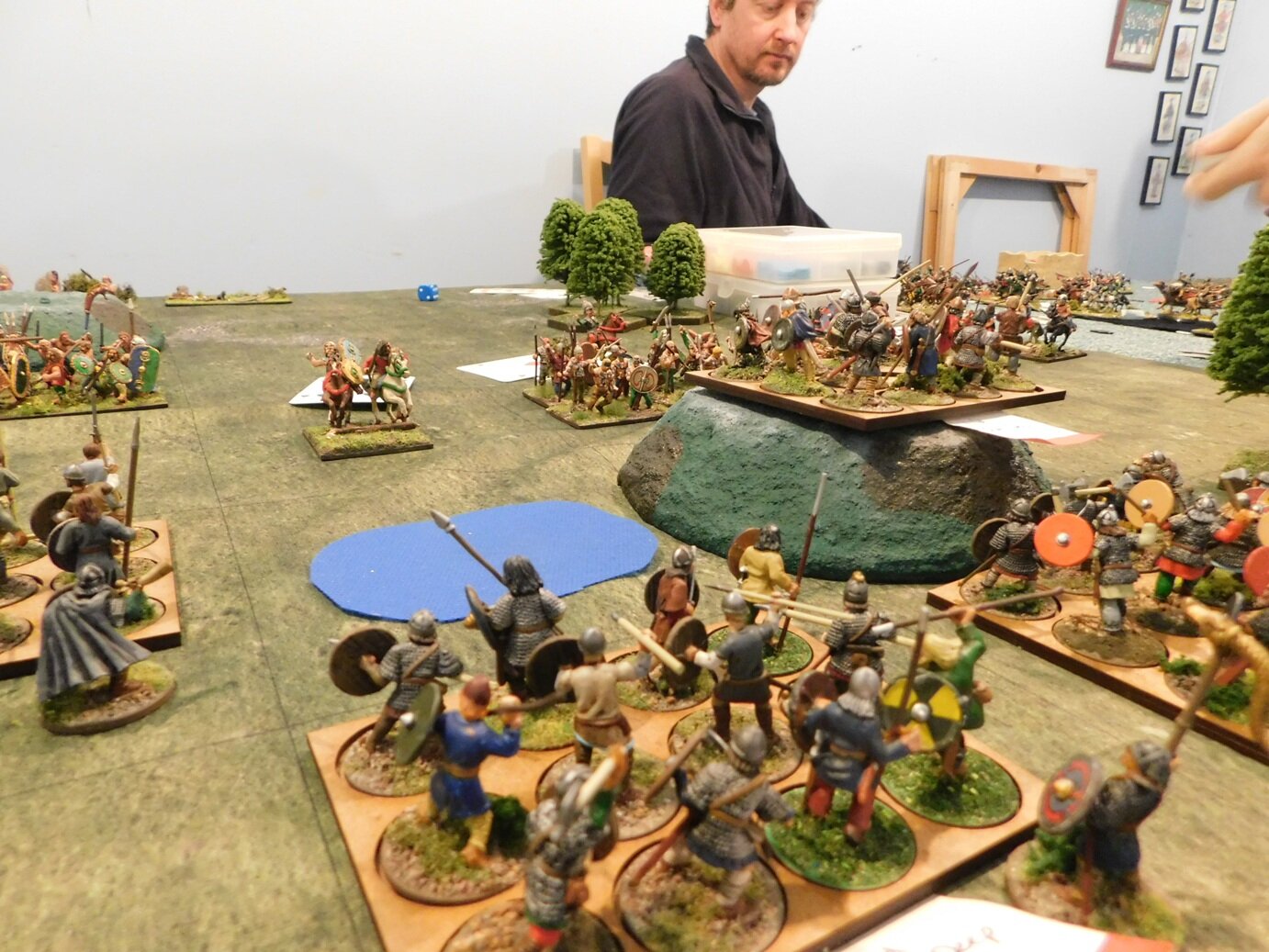TTS AAR: To The Longest: Game Two: Venetians versus 100YW English
/My second game at the inaugral To The Longest was also against an English Hundred Years War army: more longbowmen, more stakes and more dismounted knights!
Both John, my opponent, and I kept one command of mounted knights back from the initial deployment, with both sides then bringing them onto the field on the side of the table where the ruined monastry stood: the monastry being worth extra points at the end of the game to whoever held it by having units in orthagonal base to base contact with it.
Having learnt my lesson in sending my lights forward to die in a hail of longbow fire in the last game, I decided just to advance my fighting units forward, and get them stuck in as soon as I could.
This was a sensible tactic to adopt,,,until, that is, the cards decided to really mess with my plans!
First up, my pike advancing on the left had a great opportunity to run over some longbowmen, but didn’t:
The pikes then died, costing me three coins early in the game!
Next, a command of knights attempted to charge some enemy longbowmen safely ensconsed behind rows of stakes. This was a stupid thing to try to do anyway, but a couple of aces didn’t help:
The knights would spend the next few turns uselessly smashing away at the longbowmen with neither side able to damage the other!
I was still determined to get stuck in to his melee-weak massed longbows, particularly on the left side of the field…
…but those Aces kept coming thick and fast!
By this time I had had enough. I decided on a complete change of tactics and, unusually for me, play for a draw by retreating all my troops back to my side of the field, ceasing their Ace-ridden attempts to smash their way into John’s longbow-held position.
I therefore pulled back on both the left and centre, although I did keep possession of the monastry on the right.
Now this is where the game suddenly got interesting as John, with a sudden rush of blood to the head, decided to come after me.
Firstly, the dismounted knights guarding his camp left the safety of their fortifications and came a cropper against a unit of Lancieri and my Alabardiers, who executed a second quick 180 degree turn to re-engage the enemy once they were out in the open.
Second, a unit of veteran English longbowmen attempted to re-take the monastry position from my Later Knights, who promptly remembered why they were called Later Knights and ran them over without difficulty.
Back to the left flank, where enemy longbowmen had followed their dismounted knights out of the fortified camp only to also fall foul of the Alabardiers who, it must be said, were having a very good day indeed!
This left the English camp open…my Alabardiers walked into it…and suddenly John announced he was out of coins and I had won the battle!
Well that was quite a surprise!
With possession of the monastry, I had achieved a 14-8 victory over the invading English.
I’d like to say that my tactical retreat was indeed that: a carefully planned tactic to draw John out from his position…but it wasn’t. I was genuinely determined to retreat back to my side of the field and make him come to me if he wanted anything but a draw, and was then quite surprised that I managed to turn things around as I did.
I was lucky to kill the dismounted knights on the left so easily, and John was annoyed with himself for exposing his longbowmen on the right (he’d have been okay if he’d sent the knights behind them forward instead) but what a topsy-turvily fluid game!
On to the afternoon’s big bash…












































